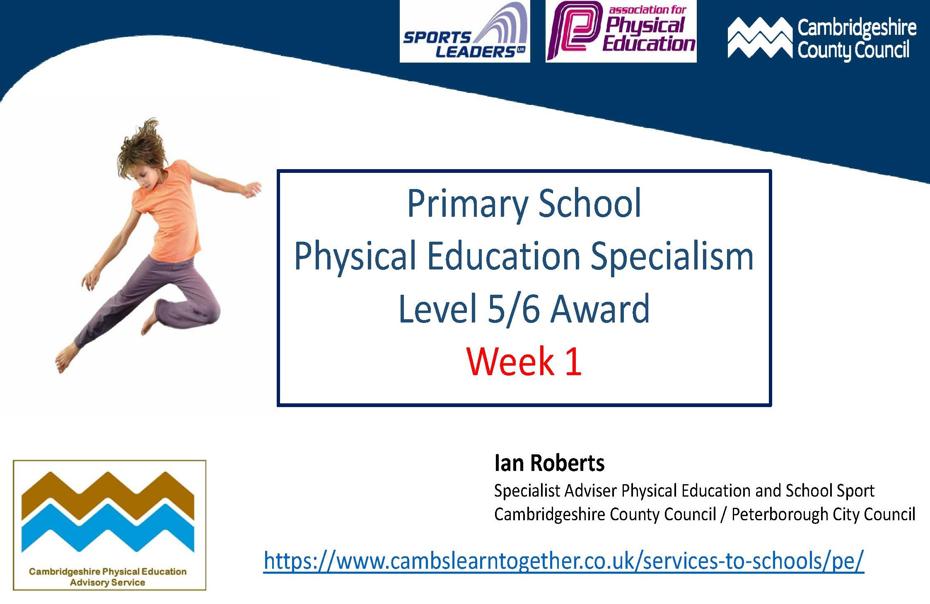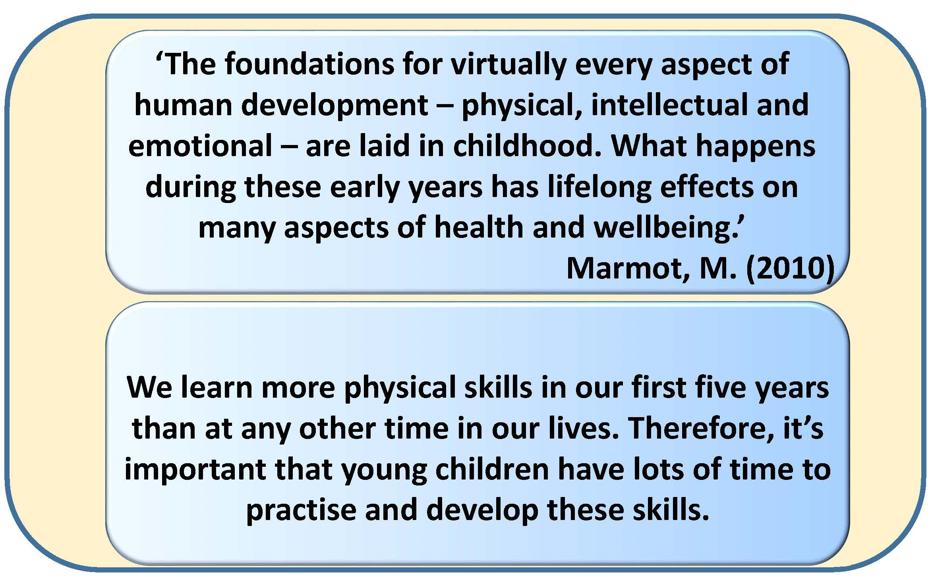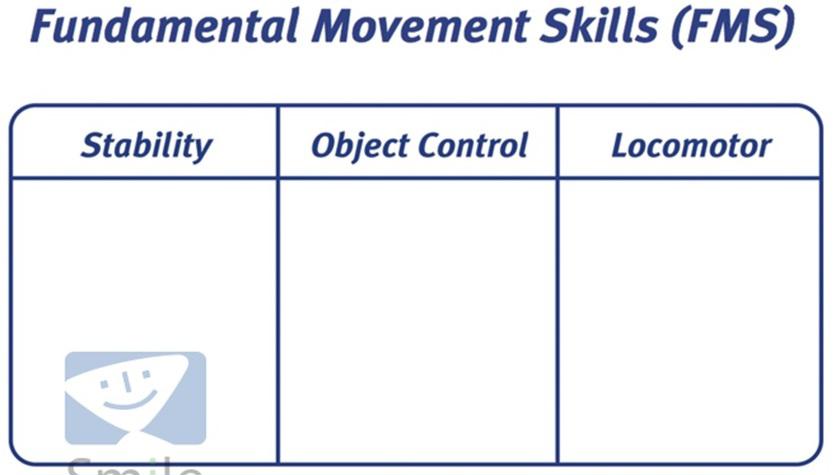
Learning Episode Three
Laying the Foundations
We learn more physical skills in our first five years than at any other time in our lives. Therefore, it’s important that young children have lots of time to practise and develop these skills.
We have an important role to play in giving babies and young children positive early movement experiences through physically active play and games, which will lay the foundations for a future of health-enhancing physical activity and wellbeing.
Reflection ActivityDo you agree with the following movement milestones from birth to 5yrs using the framework provided |
|
0-5mths |
Turns from side to back Sits upright with support |
|
5-9mths |
Unilateral reaching Sits alone unsupported |
|
5-12mths |
Pulls up to standing position Walks with assistance |
|
9-16 mths |
Stands alone Walks alone |
|
12-18 mths |
Controlled grasp of objects Walks backwards/sideways |
|
18-24 mths |
Whole body rhythmical actions/dancing Steps down from a low object |
|
2-3 yrs |
Stands on one foot Jumps off floor |
|
3-4 yrs |
Pedals a tricycle Hops on spot |
|
4-5 yrs |
Touches toes when upright Efficient running |
|
5-6yrs |
Skips with alternate feet Catches/throws a ball |


Reflection ActivityTeaching the Basics
|

The Proficiency Barrier
- Without proficient basic movement patterns as the ‘building blocks,’ children will be unable to access many of the physical activities they meet later in life.
- They will meet a proficiency barrier as they try to progress from the simple activities of early childhood to the more complex activities in late childhood and beyond
Reflective ActivityOn the peripheryReflect on and identify the sports and activities that you would not be able to participate in if you can’t:- Run Throw Swim |

Myths and misconceptions
- Reaching maturity and achieving potential in physical skills will happen naturally without intervention
- Basic movements and skills do not have to be taught
- Teachers can bypass the basics
- Sporting ability is solely inherited and fixed
Categories of Movement
- Stability ( balance and co-ordination)
- Object Manipulation ( object control)
- Locomotion ( travel)
Reflection ActivityUsing the three categories (SOL) list as many movements as you can think of under each heading |


Basic Movement Competence
Definition:
- The ability to consistently perform basic movements in a technically mature, adaptable and creative manner
- And to apply these basic movements effectively in increasingly more complex contexts
The Immature phase
- A small number of body parts used in the action
- Many features of the refined, mature action are missing and the movement looks limited
Moving towards maturity
- More control,
- Balance and co-ordination improves
- More features of the mature pattern
BUT
- The movement is not performed efficiently
- This is the point many children (and adults) do not move beyond
Developing Competence
- Mature technical performance of fundamental movements is vital for children’s competence but on its own it is not enough.
- Need ability to perform movements in different ways in order to
- ADAPT to the varying demands of situations or environment
- CREATE own responses to different situations producing movements which are original
How do we develop adaptability and creativity?
Use of movement concepts to inform our interventions:
What you are looking for...
- Space ( where the body moves)
- Effort ( how the body moves)
- Relationships ( who or what the body moves with)


